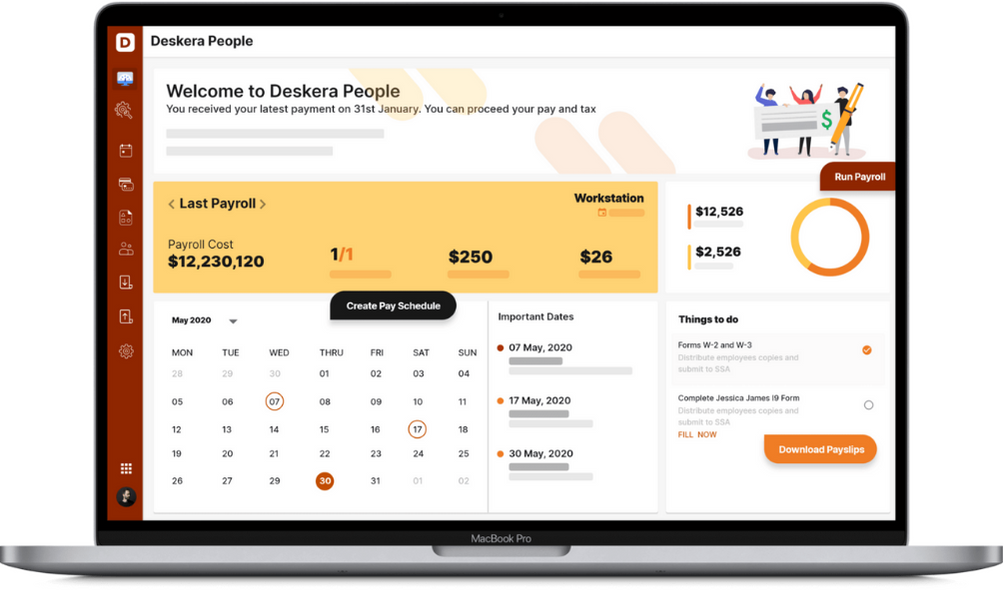Did You Know -
Muster roll is a must-use register in industries that employ a labour force, but the term actually originated in the army? The term 'muster' means the process of accounting for soldiers in the military. The officer in charge of roll call would use a list with the names of members in their unit, reading the names out loud and note the response to record who is present, and this list came to be known as 'muster roll'.
Muster roll is an important record and it is the duty of an employer who employs workmen at their establishment to maintain it by law.
For example, the 2004 case of M.P. Electricity Board vs terminated employee Hariram elucidates the importance of a muster roll. Terminated employee Hariram was seeking permanent employment under the Board and back wages on the grounds that his termination followed the rules of temporary employment when in fact he had completed 240 working days with the company and so the company should have followed the legal requirements set for a permanent employee. The Labour Court in Bhopal ruled in favour of M.P. Electricity Board solely on the proof shown in the records maintained in the muster roll, which indicated the respondent in fact did not cover 240 working days a year and the employer, through the muster roll, proved he was only employed on a need basis and so he was a temporary worker.
In this article, we cover:
- What is muster roll - the definition and explanation.
- Where the term muster roll originated from
- How a muster roll register looks like
- The contents in a muster roll
- Part-1 (Nominal roll)
- Part-2 (Register of arrears of wages due to worked people)
- Part-3 (Details of measurement of work done by labour)
- Muster roll format to follow
- The importance of maintaining muster roll
- E-muster roll
What Is 'Muster Roll'
A Muster Roll is an attendance register or an employment list that contains details about a specific worksite, an employer or contractor, and the employee attendance for a specific period of time. The muster roll also acts as an acknowledgement and as proof to claim funds from the concerned officer for the payment of salaries and wages.
In simple words, the muster roll is a record of attendance, wages paid, unpaid wages, and the quantity of work done by labour for a specific period of time.
One worksite generally has multiple muster rolls, because of different contractors, projects, or periods. These are consolidated into a muster roll register. The muster roll register gives all the details pertaining to muster rolls that are present for a complete worksite, or a project/work that is completed and correct remuneration has been paid.
In some cases, muster roll and muster roll register are terms that are interchanged, but the bottom line is that a muster roll is an attendance register that records important labourer information (which we will cover in a bit) and a worksite can have multiple muster rolls which are consolidated at the end of a job.
The muster roll is created and maintained by the employer or contractor and also contains other information like joining date and other service information, maternity leaves information in the case of female employees, etc.
The muster roll is created by the employer and information is filled by checking how many days a worker has worked, how many hours per day they have spent on site, and how much money has been paid. This information can be cross-checked against the employee's time card or by asking them.
The Origination Of The Term
The term 'muster roll' was first used in maritime law, where a shipmaster used an attendance list to maintain records of name, age, nationality, etc., of every employee on the ship. The same was followed in the army and other disciplines of the military forces. This format has since been used by contractors and employers to record worksite information.
What Does A Basic Muster Roll Look Like?
Example of a muster roll (Proforma of Muster Roll (Form 22) (State of Karnataka)):

The Contents In A Muster Roll
The contents of a muster roll can be broadly divided into three parts:
- Part-1 (Nominal roll)
- Part-2 (Register of arrears of wages due to worked people)
- Part-3 (Details of measurement of work done by labour)
Here's what each part signifies and contains:
1. Part -1 (Nominal roll)
In this part of the muster roll, which is the nominal roll, all personal information about the labourer is recorded and their daily attendance is marked against their name. Labourers should be grouped according to categories on the muster roll, categories like masons, welders, carpenters, etc. The personal information that is recorded is the name of the labourer employed, designation and their father's name. The daily attendance has to be signed by the concerned employee and the employer or contractor on this sheet.
2. Part -2 (Register of arrears of wages due to worked people)
In this second part of the muster roll, the register of arrears of wages due to worked people, the employer records all unpaid wages. These unpaid wages are marked against labourers who are owed. The particulars of wages that are unpaid for a period of three months should be brought to the notice of executive engineers in charge, the engineers whose permission and orders are necessary before unpaid wages can be paid.
3. Part -3 (Details of measurement of work done by labour)
In the third part of the muster roll, the details of measurement of work done by labour, the quantity of the work done by the engaged labour are recorded. The particulars of the work done by the labourers and the corresponding page references in the measurement book is also recorded in the third part of the muster roll. In case the work done is not quantifiable, the employer or contractor must enter 'Work not susceptible of measurement' in the muster roll.
Muster Roll Format
The format of the muster roll is legally defined as shown below. The law requires that each employer or contractor maintain a muster roll with employee's particulars and their wages and/or salary information recorded in the format shown here:
- Name and Address of the Factory or Establishment
- Name and Address of the Contractor (if any)
- Name and Address of the Principal/Employer
- Place of work
- Month and Year
- Name of the employee
- Employee's Father's or Husband's Name
- Gender
- Employee id number
- Designation/Department
- Date of Joining
- ESI number
- PF number
- Day wise attendance for the month
- Number of Payable days
- Salary or wage details (component-wise)
- Details of deductions (component-wise)
- Net Salary or Wages payable
- Employee or Receiver's Signature or Thumb impression
The Importance of Maintaining Muster Roll
Maintaining a muster role is mandatory by labour laws, but apart from it being a legal requirement, it also carries benefits to both the employer and the government.
Maintaining muster roll reduces the need for maintaining other, multiple records of labour attendance and wages. When you consider a project that employs hundreds of labourers and employees, the benefit of maintaining one standard tracking document becomes obvious.
This is not just a matter of convenience. The muster roll can be furnished as a legal document of labour and wages information for many different laws in force, again reducing the need for maintaining different records to satisfy different laws.
For example, maintaining a muster role in the state of Karnataka helps the contractor or employer satisfy the following statutory requirements as well:
- Form V, Rule 29(1) of the Karnataka Minimum Wages Rules, 1958
- Form VII, Rule 29(5) of the Karnataka Minimum Wages Rules, 1958
- Form III, Rule 5 of the Karnataka Payment of Wages Rules, 1963
- Form XVI, Rule 78(1)(a)(i) of the Contract Labour (Regulation & Abolition) (Karnataka) Rules, 1974
E-Muster Roll
On January 1 2021 the Odisha government launched e-muster roll or the electronic filing of the muster roll. The purpose was to maintain digital copies of muster roll and to prevent any manipulation of data. As a part of this implementation, workers' wages are to be directly transferred into their banks.
The need for maintaining digital copies of statutory records has become vital and urgent since the Covid-19 pandemic. That being said, your state may not be eligible for e-muster roll and it is important to check with the local authorities before moving the muster roll to a digital space.
How can Deskera Help You?
As a business, you must be diligent with employee leave management. Deskera People allows you to conveniently manage leave, attendance, payroll, and other expenses. Generating pay slips for your employees is now easy as the platform also digitizes and automates HR processes.

Key Takeaways
- A muster roll is a daily attendance record of labourers, the wages paid, and the wages due for a specific period of time. It is maintained by an employer or contractor
- The term comes from maritime and military proceedings of maintaining an attendance sheet along with wages paid for each officer on a ship or in the field. The list also held important personal information that was used to identify the individual. A factory muster roll follows the same principle
- The muster roll contains information like joining date, designation and father's name that helps identify the worker
- A muster roll is divided into 3 parts, the first contains personal information of the labourer, the second contains the wages due to the labourer, and the third contains the measurement of work (in a unit that is acceptable to the job)
- There can be multiple muster rolls per project or job but there should not be duplicates
- For multiple payments made to a labourer within the same time period, each payment has to be separately entered into the muster roll
- All payments are made in accordance with the muster roll once it has been passed by the local officer
- Unpaid wages are passed from one muster roll to the next until they are fully paid
Related Articles













